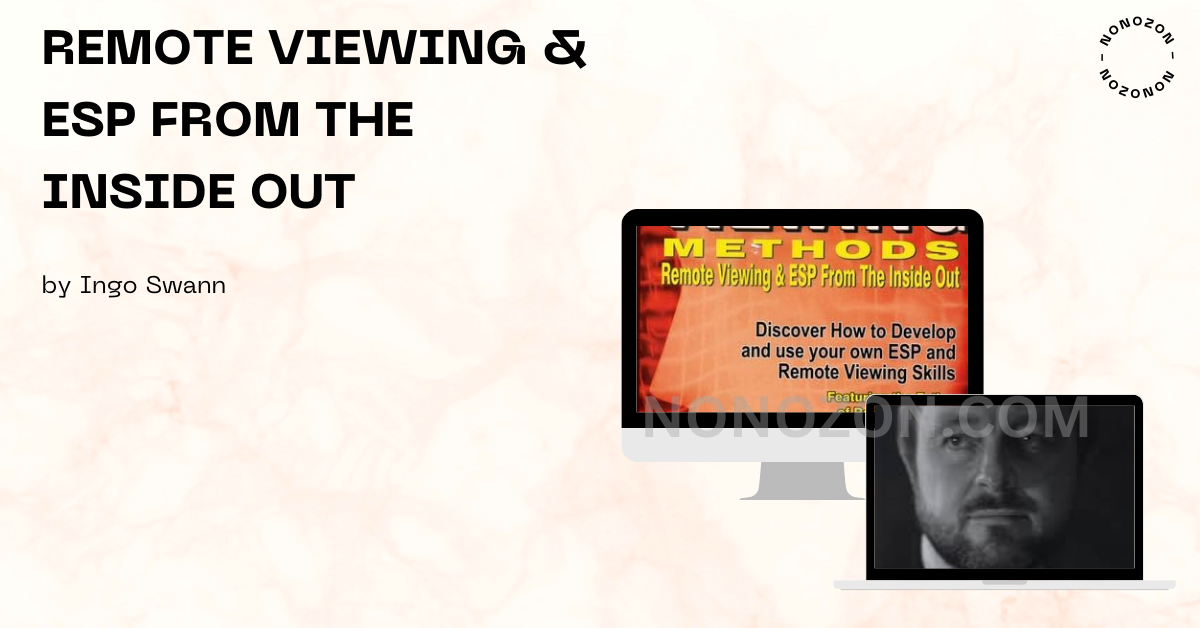Remote Viewing & ESP From the Inside Out
by Ingo Swann
Get Remote Viewing & ESP From the Inside Out by Ingo Swann Digital Download!
You can check proof of content here

Remote Viewing & ESP From the Inside Out by Ingo Swann
Overview

Exploring the Depths of ESP – A Review of Ingo Swann's “Remote Viewing and ESP from the Inside Out”
In Remote Viewing and ESP from the Inside Out, Ingo Swann offers a compelling and layered journey into the mechanics and mysteries of extrasensory perception (ESP) and remote viewing. Drawing on decades of personal experimentation and professional involvement—most notably his foundational role at the Stanford Research Institute—Swann provides a rare insider’s view. The book melds experiential wisdom with practical guidance, going far beyond theoretical musings to deliver an immersive exploration into human potential. In this review, we’ll unpack Swann’s methodological innovations, his argument for honoring subjective experience, and the profound philosophical outlook that anchors his approach.
A Personal Odyssey into Psychic Realms
Swann’s narrative doubles as both memoir and manifesto. His firsthand experiences serve as a vehicle to challenge conventional scientific methods applied to ESP. Swann critiques traditional parapsychological research for its overemphasis on quantifiable results, arguing that such methods often strip psychic phenomena of their most vital element: the subjective encounter. His call for a phenomenological perspective emphasizes the rich, personal texture of psychic experiences—an aspect that sterile lab conditions routinely neglect.
This critique is reinforced by Swann’s own experimental history, particularly his frustrations with attempts to replicate psychic experiences under rigid conditions. He recounts how the unpredictability of ESP often clashed with structured expectations, which ultimately fueled his development of a more holistic and intuitive methodology. His proposed framework embraces the natural variability of psychic abilities while introducing structure that guides rather than restricts.
Demystifying Remote Viewing
Far from being a mystical or abstract practice, Swann presents remote viewing as a skill-based discipline grounded in mental discipline. His system relies on a methodical sequence that helps individuals harness latent faculties of perception. Swann walks the reader through each step with clarity, supplemented by detailed case studies and personal anecdotes that reveal both the challenges and the transformative rewards of the practice.
Each story and example presented functions not only as proof of concept but also as motivation. They serve to demonstrate that remote viewing is teachable, repeatable, and rooted in a broader perceptual framework that transcends ordinary sensory input. In doing so, Swann successfully repositions ESP from the margins of fringe science to a legitimate, trainable human capability.
Cultivating the Mind: Practical Techniques
To bridge theory and application, Swann shares an array of exercises designed to strengthen remote viewing proficiency. These techniques emphasize foundational skills such as mental imagery and focused awareness:
Visualization Drills – Structured imagery exercises that refine the ability to mentally construct distant places or events.
Mindfulness Practices – Meditation is presented as a prerequisite to remote viewing, helping cultivate the stillness required for intuitive insight.
Attention Training – Strategies aimed at sharpening concentration and enhancing access to intuitive data.
Swann's techniques underscore his belief that psychic growth is not spontaneous but cultivated. These exercises offer a concrete path for readers to follow, supporting their development with tools grounded in both science and intuition.
A Consciousness-Centered Worldview
Beyond the methods and stories, Swann’s work is infused with a deeply reflective perspective on the nature of consciousness. He articulates a worldview rooted in interconnectedness, arguing that all beings are linked through a shared psychic field. This outlook challenges dominant materialist interpretations of reality, inviting readers to expand their notions of perception and existence.
For Swann, ESP is more than just a peripheral ability—it is intrinsic to our understanding of who we are and how we relate to the world. His philosophical musings add a profound dimension to the book, elevating it from a manual into a meditative inquiry on human potential.
The Role of Mental Imagery in Psychic Mastery
Swann frequently returns to the role of mental imagery as a foundational psychic tool. He posits that the ability to visualize with clarity is not only essential to remote viewing but is a fundamental human trait that can be nurtured through practice. His proposed visualization routines are both accessible and transformative, helping readers build the mental muscle necessary for advanced ESP work.
Through examples and step-by-step guidance, Swann demonstrates how visualization becomes the bridge between known and unknown perception. These methods foster a greater level of self-trust and intuition, essential elements in any psychic practice.
Stories That Validate the Process
Throughout the book, Swann presents accounts of successful viewing sessions, many of which were validated by external sources. These examples aren’t merely inspirational—they’re evidentiary. They reinforce his view that with dedication, anyone can achieve significant breakthroughs in remote viewing. These stories help to ground the book’s more philosophical sections, showing how practice and persistence yield real-world results.
Conclusion – Unlocking the Boundaries of Human Awareness
Ingo Swann’s Remote Viewing and ESP from the Inside Out is a rich fusion of practical guide, philosophical reflection, and experiential wisdom. By challenging outdated research methods and presenting remote viewing as an attainable skill, Swann pushes readers to reconsider their understanding of perception. His insights urge a shift from skepticism to exploration, from passive observation to active participation in the mysteries of the mind.
Ultimately, Swann’s message is clear: our psychic potential is not an anomaly, but a latent capacity awaiting discovery. For seekers of truth, students of consciousness, and explorers of the unseen, this book offers not only a roadmap but an invitation—to perceive, practice, and awaken to the deeper layers of human awareness.




